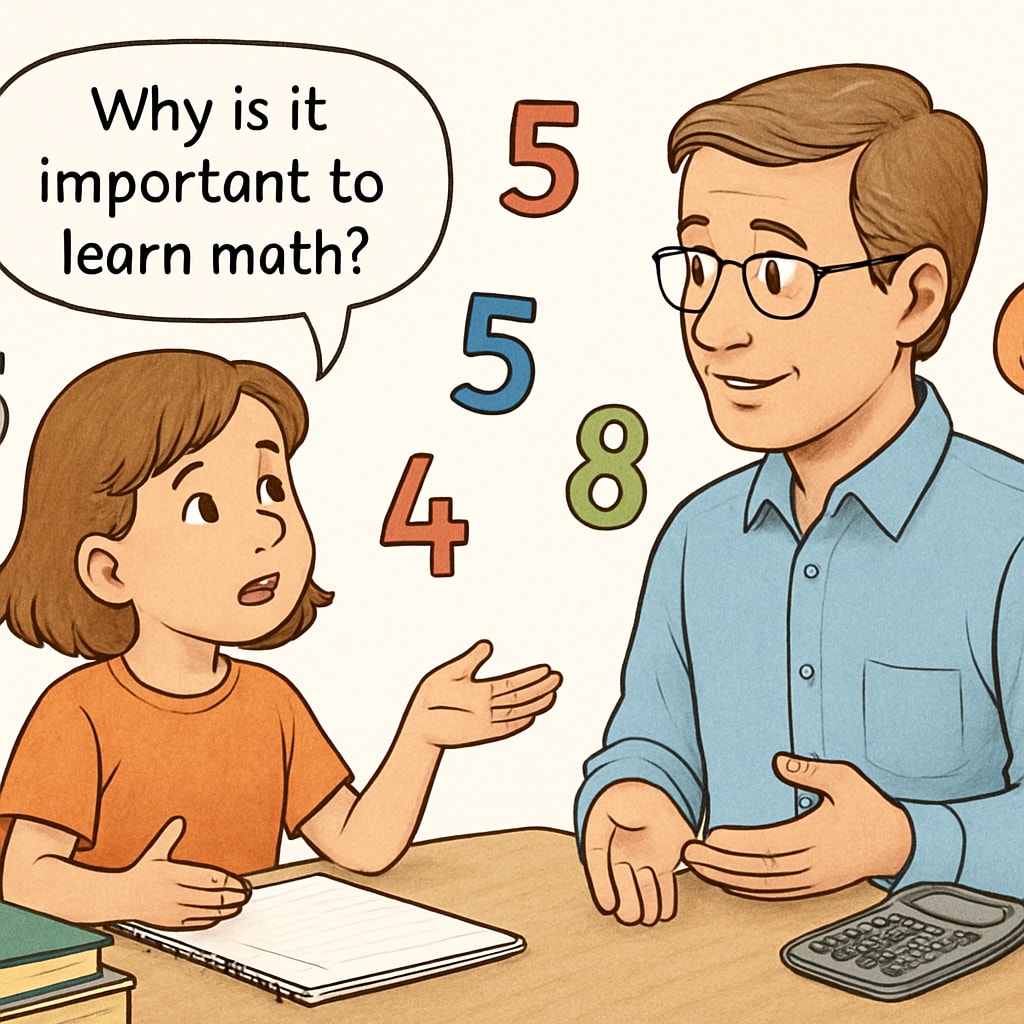When children question the importance of math with a familiar phrase like “Why do we need to learn math?”, parents and educators often struggle to provide meaningful answers. Addressing this query effectively is critical for fostering learning motivation and positive attitudes toward math. In this article, we’ll explore three practical strategies that can transform “forced learning” into “curious exploration.” These methods aim to improve educational communication and help children connect math to real-world applications.

Connecting Math to Everyday Life
One of the most effective ways to answer “Why learn math?” is by showing children how math applies to their daily lives. Mathematics isn’t just about numbers in a textbook; it governs everything from cooking recipes to managing finances. For example, measuring ingredients while baking involves fractions, while budgeting for an allowance teaches simple addition and subtraction.
To make this connection more tangible, consider using relatable examples:
- Explain how math helps us calculate the time needed for traveling to school or a friend’s house.
- Discuss how geometry is used in designing playgrounds, sports fields, or even buildings.
- Highlight how statistical data is used in sports to evaluate player performance.
By linking math to real-world scenarios, children are more likely to see its value and engage with learning more enthusiastically.
Building Long-Term Skills Through Math
Another critical aspect of answering this question is emphasizing how math builds essential life skills. Mathematics teaches logical reasoning, problem-solving, and critical thinking—skills that are vital for success in many careers and personal decisions. For example, engineers use math to design bridges, doctors rely on statistics to interpret test results, and entrepreneurs calculate risks and profits when launching businesses.
Additionally, math fosters analytical thinking that can be applied beyond academic scenarios. It trains the mind to approach challenges systematically, whether it’s solving a puzzle or planning a vacation budget. Sharing these benefits with children can help them understand that math is more than an academic subject; it’s a tool for navigating life.

Encouraging Curiosity and Exploration
Rather than framing math as a mandatory subject, educators and parents can inspire children to explore math as a fascinating field. Introducing math as a way to solve mysteries or discover patterns in the world can spark curiosity. For example, the concept of the Golden Ratio is often found in nature, art, and architecture. Sharing these intriguing facts with children can make math feel less like a chore and more like a puzzle to solve.
Here are some ways to nurture curiosity:
- Use math-based games and puzzles to create a fun learning environment.
- Explore math in nature, such as symmetrical patterns in flowers or the Fibonacci sequence.
- Encourage children to ask questions and investigate concepts they find interesting.
When children see math as a tool for discovery, they’re more likely to approach it with enthusiasm and a sense of wonder.
In conclusion, the question “Why learn math?” offers an opportunity for parents and educators to inspire motivation and curiosity. By connecting math to real-life situations, emphasizing its role in skill development, and cultivating a sense of exploration, children can develop a positive relationship with math. Effective educational communication can transform their perspective from “I have to study math” to “I want to learn math.”
Readability guidance: Use short paragraphs and lists to summarize key points. Spread transitional words throughout the text for smoother flow (e.g., however, therefore, for example). Control passive voice and long sentence proportions to ensure clarity.


